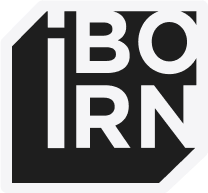The Internet of Things (IoT) is transforming industries worldwide, and healthcare stands out as one of the most profoundly affected sectors. The integration of connected devices is reshaping care delivery, management, and monitoring, paving the way for a future that is more personalized, efficient, and data-driven.
The Emergence of Connected Devices in Healthcare
The rapid growth of IoT-enabled devices is driving significant advancements in healthcare. From wearable fitness trackers to sophisticated medical systems, these devices enable real-time monitoring and data analysis, empowering healthcare providers to offer more tailored care.
Wearable technology has evolved beyond consumer gadgets to become essential tools in managing chronic conditions such as diabetes and cardiovascular diseases. Devices like smartwatches and biosensors track vital metrics like heart rate, blood pressure, and glucose levels and transmit this data to healthcare professionals. This continuous data flow enhances early detection, timely intervention, and improved patient outcomes.
Turning Data into Decisions
Healthcare organizations generate vast amounts of data, but its true potential lies in actionable insights derived from it. IoT bridges this gap by leveraging advanced analytics and AI to turn raw data into valuable knowledge. For instance, wearable devices not only monitor physical activity but also predict health risks by analyzing patterns in glucose levels or heart rates.
By integrating IoT with AI-driven systems, healthcare providers can predict patient needs, optimize resource allocation, and deliver better outcomes. This shift transforms IoT from being a technological add-on to a critical decision-making ally.

Bridging the Infrastructure Gap
Legacy systems are the backbone of many healthcare organizations, providing reliability and familiarity. However, they aren’t always equipped to meet the demands of modern, connected healthcare. This doesn’t mean you need to abandon them entirely. Instead, IoT serves as the bridge, creating seamless integration between existing infrastructure and cutting-edge innovations.
IoT leverages middleware platforms and APIs to ensure interoperability across devices and systems. Think of it as an expert translator, allowing old and new technologies to communicate effectively. This approach not only enhances the capabilities of your legacy systems but also extends their lifespan, offering a cost-effective path to modernization.
The result? A healthcare ecosystem where data flows freely, processes are streamlined, and patient care reaches new heights, all without the disruption of a complete system overhaul. IoT doesn’t just fill the gaps, but it transforms them into opportunities for growth and efficiency.
Practical Applications of IoT in Healthcare
IoT brings tangible improvements to healthcare delivery by enabling:
-
Remote Patient Monitoring (RPM): Patients receive high-quality care at home, reducing hospital visits and ensuring continuous monitoring;
-
Wearable health devices: Critical health metrics are tracked for early detection and timely intervention;
-
Smart hospitals: IoT automates workflows, optimizes asset tracking, and improves operational efficiency;
-
Medical asset tracking: Essential equipment is always accessible, minimizing downtime.
For example, IoT-enabled RPM systems collect and transmit data like vital signs and medication adherence, providing a holistic view of a patient’s health. This technology is particularly beneficial for chronic disease management, post-surgery recovery, and elderly care, reducing costs and improving resource utilization.
Revolutionizing hospital operations
IoT doesn’t just enhance patient care, but it also improves hospital operations. Smart systems powered by IoT track medical equipment usage and inventory levels, ensuring tools and supplies are available when needed. Automated inventory management reduces waste and ensures timely replenishment of critical items.
Additionally, IoT-enabled smart beds adjust automatically to patient needs, monitor movements, and alert staff about abnormal activity. This level of automation enhances patient safety and reduces human error.
The role of AI and big data in IoT-driven healthcare
AI and Big Data are central to unlocking IoT’s full potential in healthcare. AI-powered analytics provide actionable insights by identifying trends, predicting risks, and recommending personalized treatment plans. Predictive analytics, for instance, can forecast the likelihood of specific health conditions, enabling proactive care.
Big Data facilitates the integration of information from various sources, such as IoT devices, electronic health records (EHRs), and genomic data. This comprehensive view of patient health supports accurate diagnoses and effective treatment plans, driving the shift toward precision medicine.
Challenges and Opportunities
Despite its potential, IoT adoption in healthcare comes with challenges, including data security, privacy concerns, and the need for seamless interoperability. Protecting sensitive health data from cyber threats is critical, as is ensuring that diverse IoT devices and systems communicate effectively.
However, advancements in technology continue to address these hurdles. Improved data analytics, enhanced security protocols, and better integration tools promise a future where IoT’s benefits outweigh its challenges, enabling healthcare to become more efficient and patient-focused.
Conclusion
The integration of IoT into healthcare is revolutionizing the industry, from remote patient monitoring to operational optimization and AI-driven insights. As IoT technology evolves, it will play an increasingly central role in shaping a healthcare system that is more accessible, efficient, and personalized. While challenges remain, the possibilities are vast, and the journey toward a smarter, IoT-enabled healthcare future is well underway.



